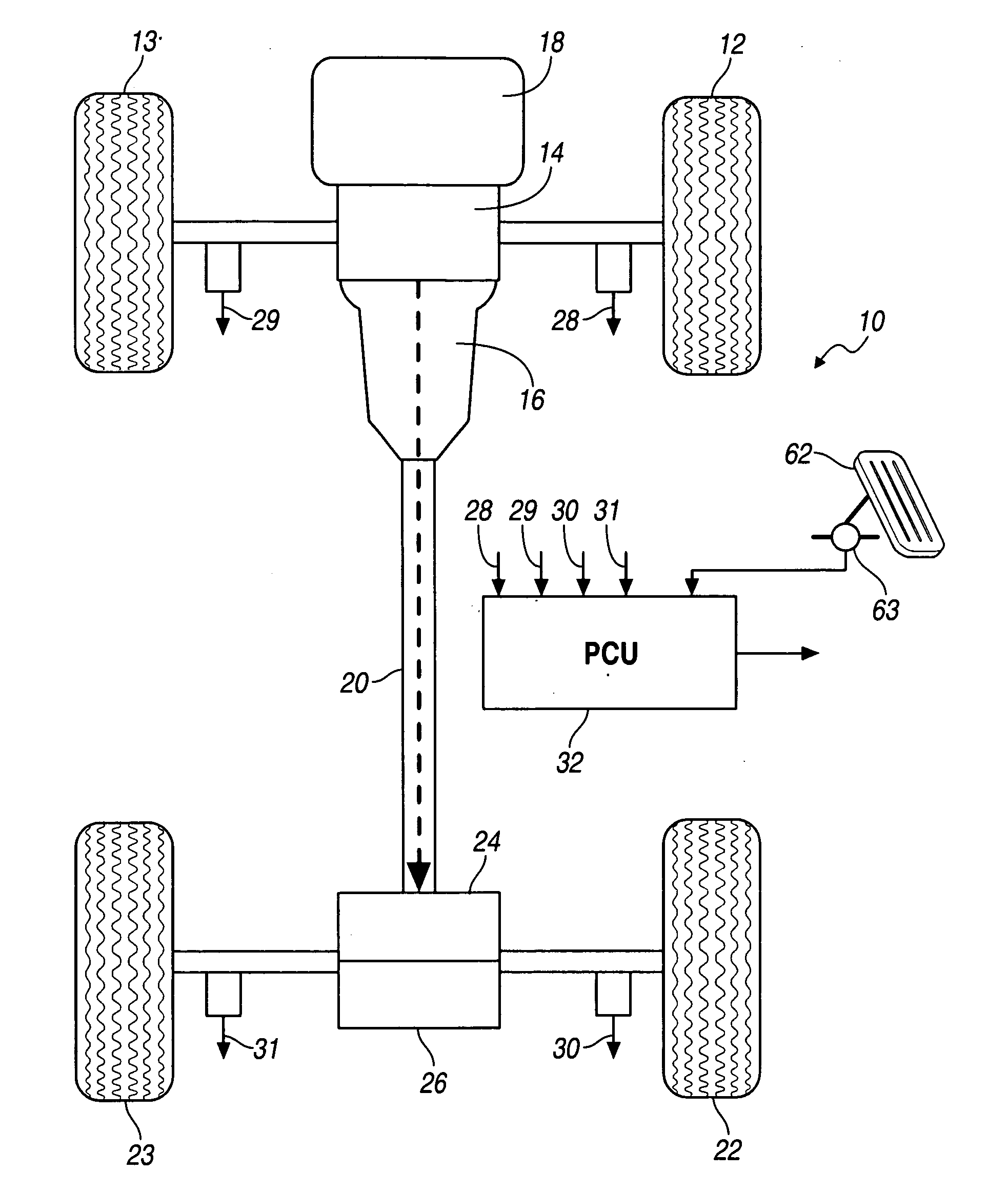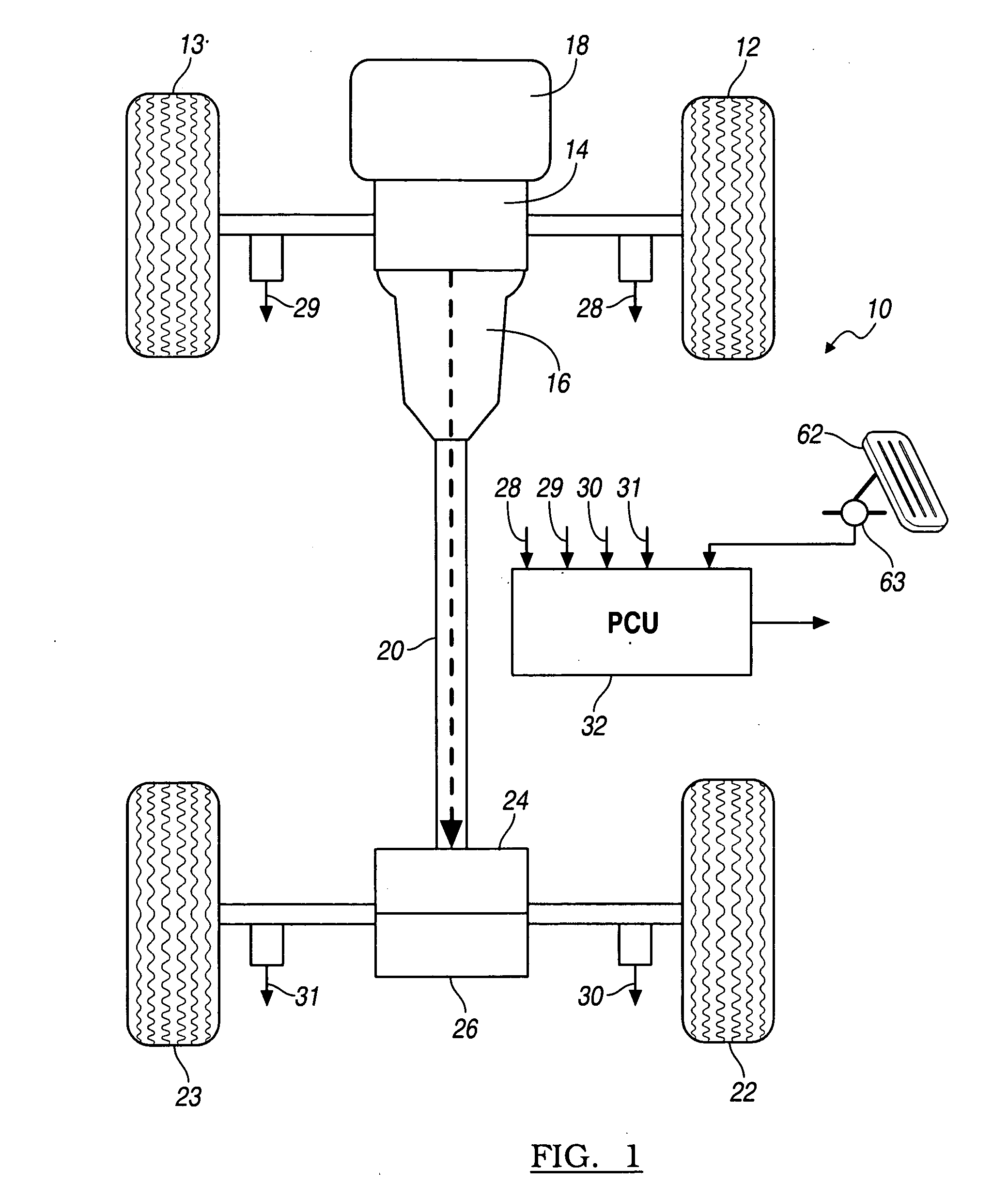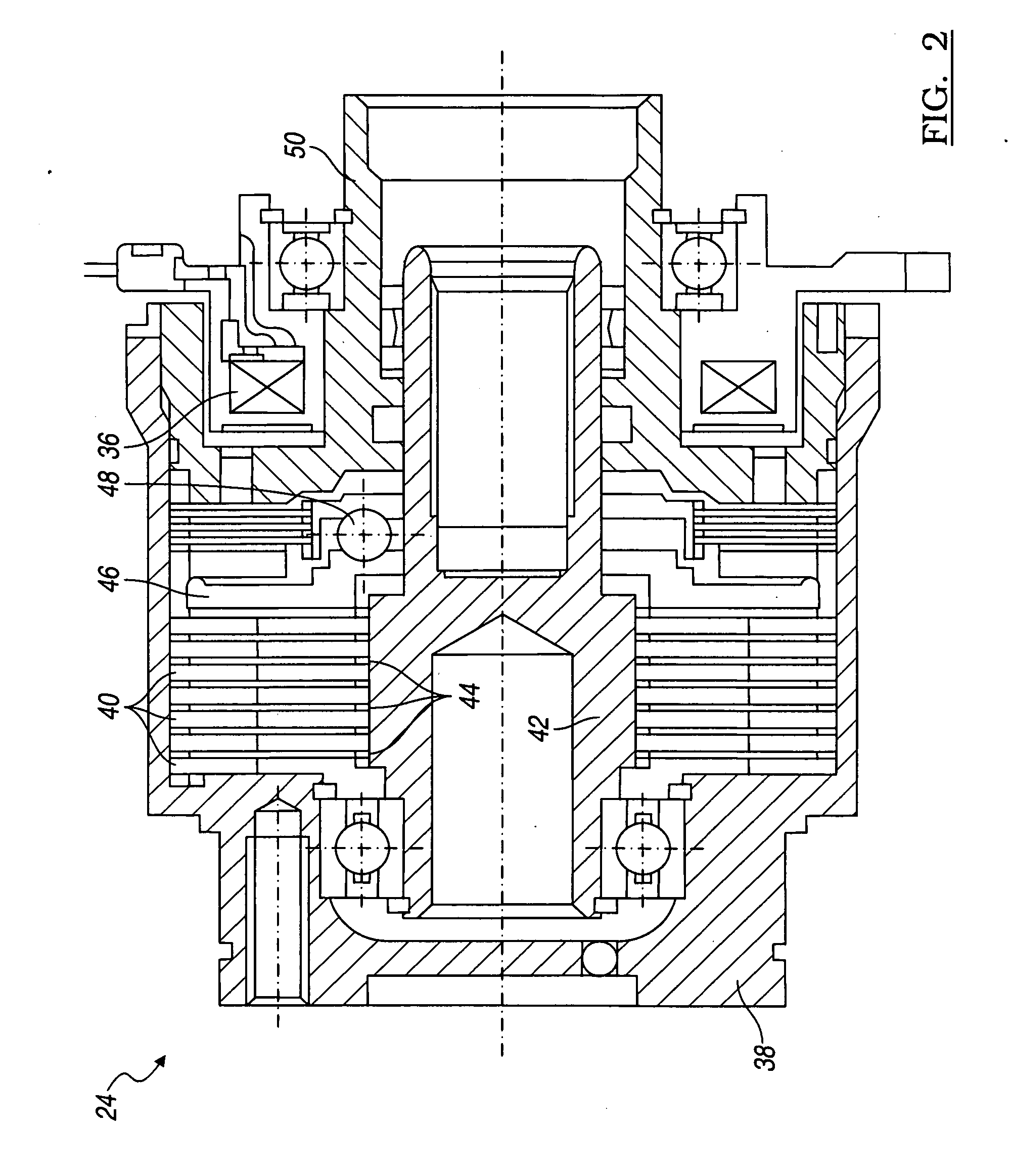Reducing Oscillations in a Motor Vehicle Driveline
- Summary
- Abstract
- Description
- Claims
- Application Information
AI Technical Summary
Benefits of technology
Problems solved by technology
Method used
Image
Examples
Embodiment Construction
[0017]Referring now to the drawings, there is illustrated in FIG. 1 a motor vehicle driveline 10 equipped with an AWD system. The front wheels 12, 13 are driveably connected to the output of a front axle differential 14, whose input is connect the output of a transmission 16, which produces multiple forward speeds and a reverse drive. The front differential 14 transmits one-half of its input torque to each of the front wheels 12, 13. The transmission is driven by a power source 18, such as internal combustion engine or an electric motor.
[0018]A driveshaft 20 transmits rotating power from the transmission 16 to the rear wheels 22, 23 through a clutch assembly 24 and a rear inter-wheel differential 26, which transmits one-half of its input torque to each of the rear wheels 22, 23.
[0019]Speed sensors each transmit to a powertrain control unit (PCU) 32, a signal 28-31 representing the rotational speed of a respective front wheel or rear wheel. PCU 32 includes a microprocessor accessible...
PUM
 Login to View More
Login to View More Abstract
Description
Claims
Application Information
 Login to View More
Login to View More - R&D
- Intellectual Property
- Life Sciences
- Materials
- Tech Scout
- Unparalleled Data Quality
- Higher Quality Content
- 60% Fewer Hallucinations
Browse by: Latest US Patents, China's latest patents, Technical Efficacy Thesaurus, Application Domain, Technology Topic, Popular Technical Reports.
© 2025 PatSnap. All rights reserved.Legal|Privacy policy|Modern Slavery Act Transparency Statement|Sitemap|About US| Contact US: help@patsnap.com



